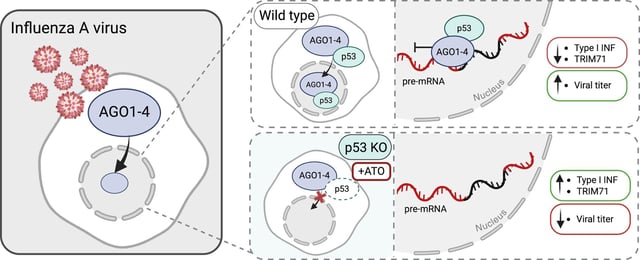Overview
- University of Gothenburg researchers discovered that influenza A relocates Argonaute 2 (AGO2) into the cell nucleus, suppressing type I interferon genes crucial for antiviral defense.
- The virus uses tumor suppressor protein p53 to shuttle AGO2 into the nucleus, where it silences immune alarm signals by binding to chromatin regions regulating interferon production.
- Arsenic trioxide, a leukemia drug, was found to restore interferon production and reduce viral loads in cell cultures and mice, offering a potential host-targeted antiviral strategy.
- This breakthrough challenges traditional views of RNA interference as a cytoplasmic process, revealing its exploitation by viruses in the nucleus to evade immune responses.
- Future research will explore whether other RNA viruses use similar mechanisms, potentially paving the way for universal antiviral therapies targeting host pathways.

